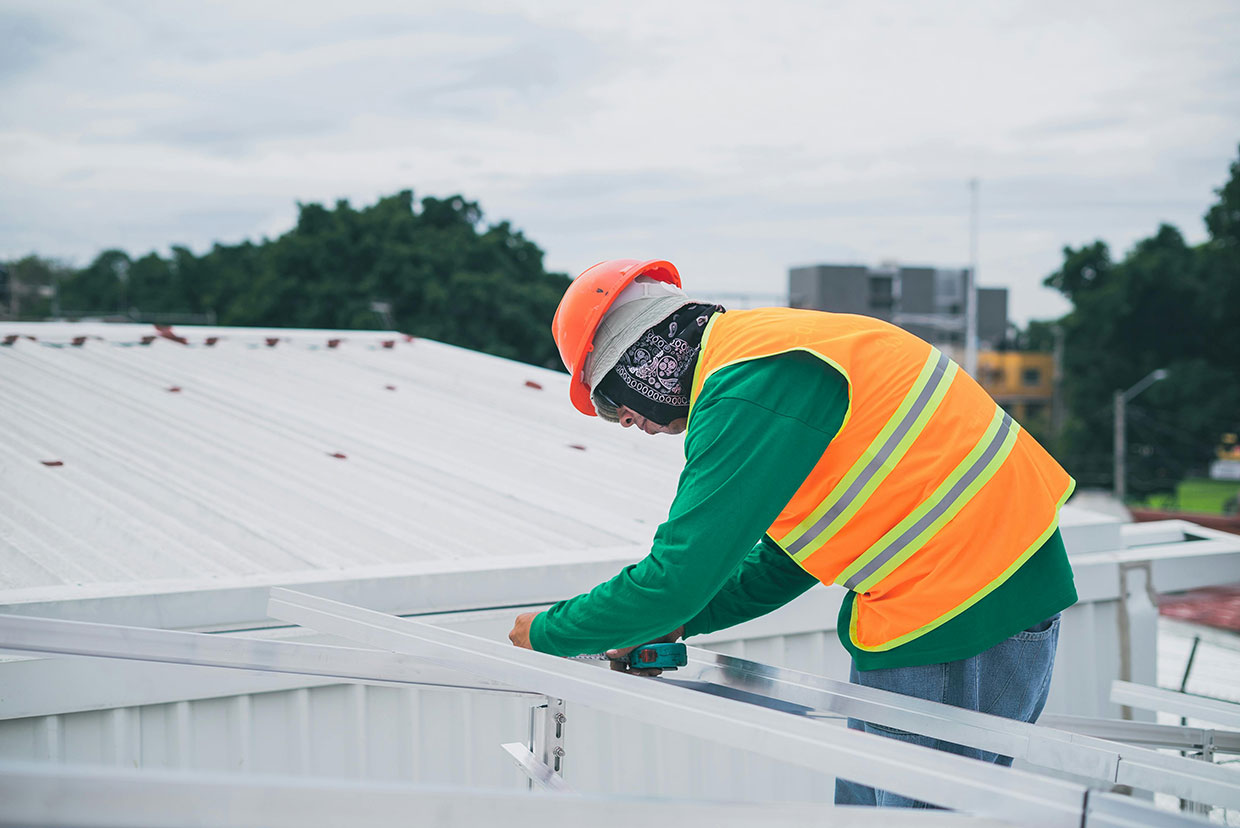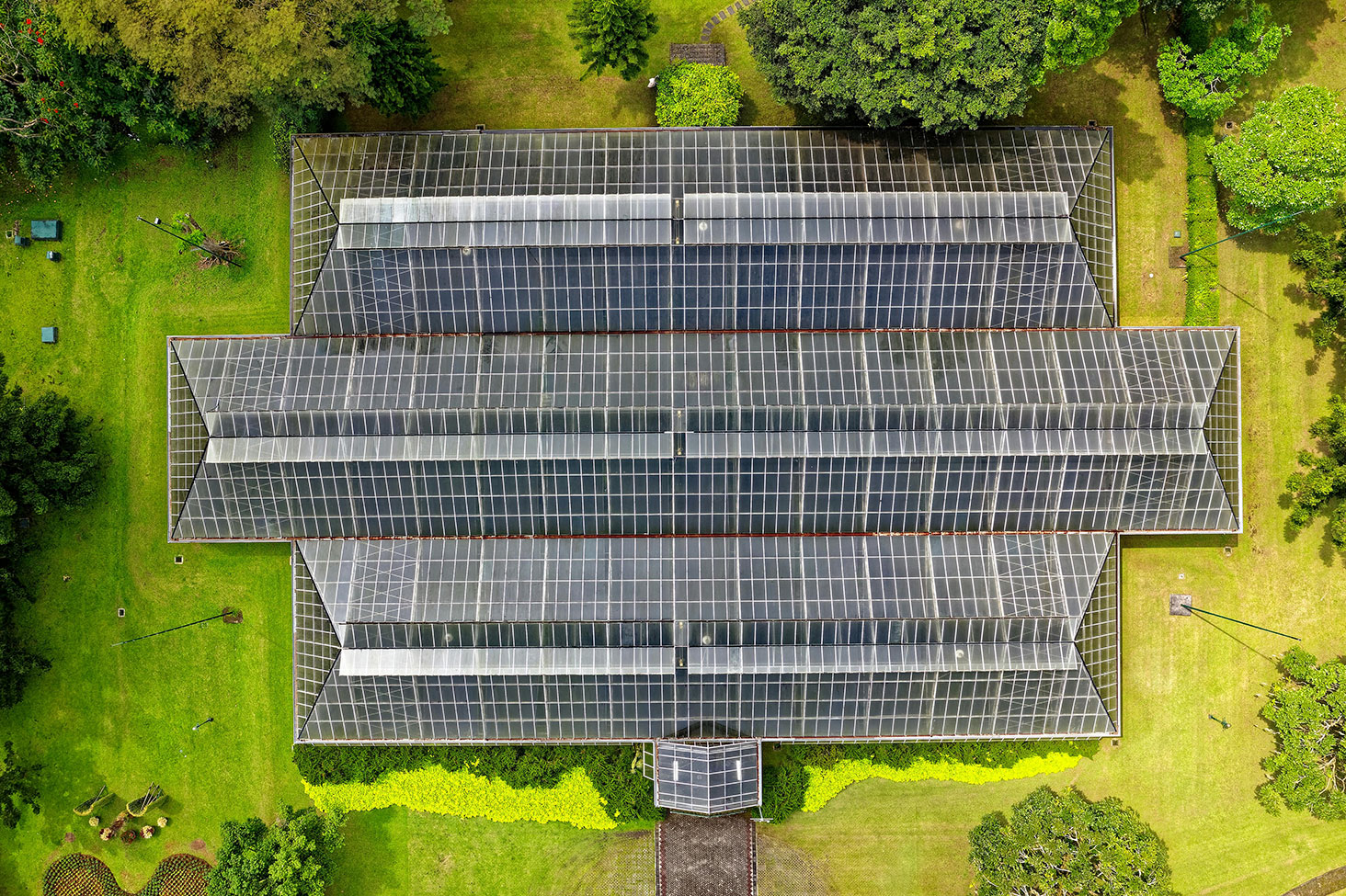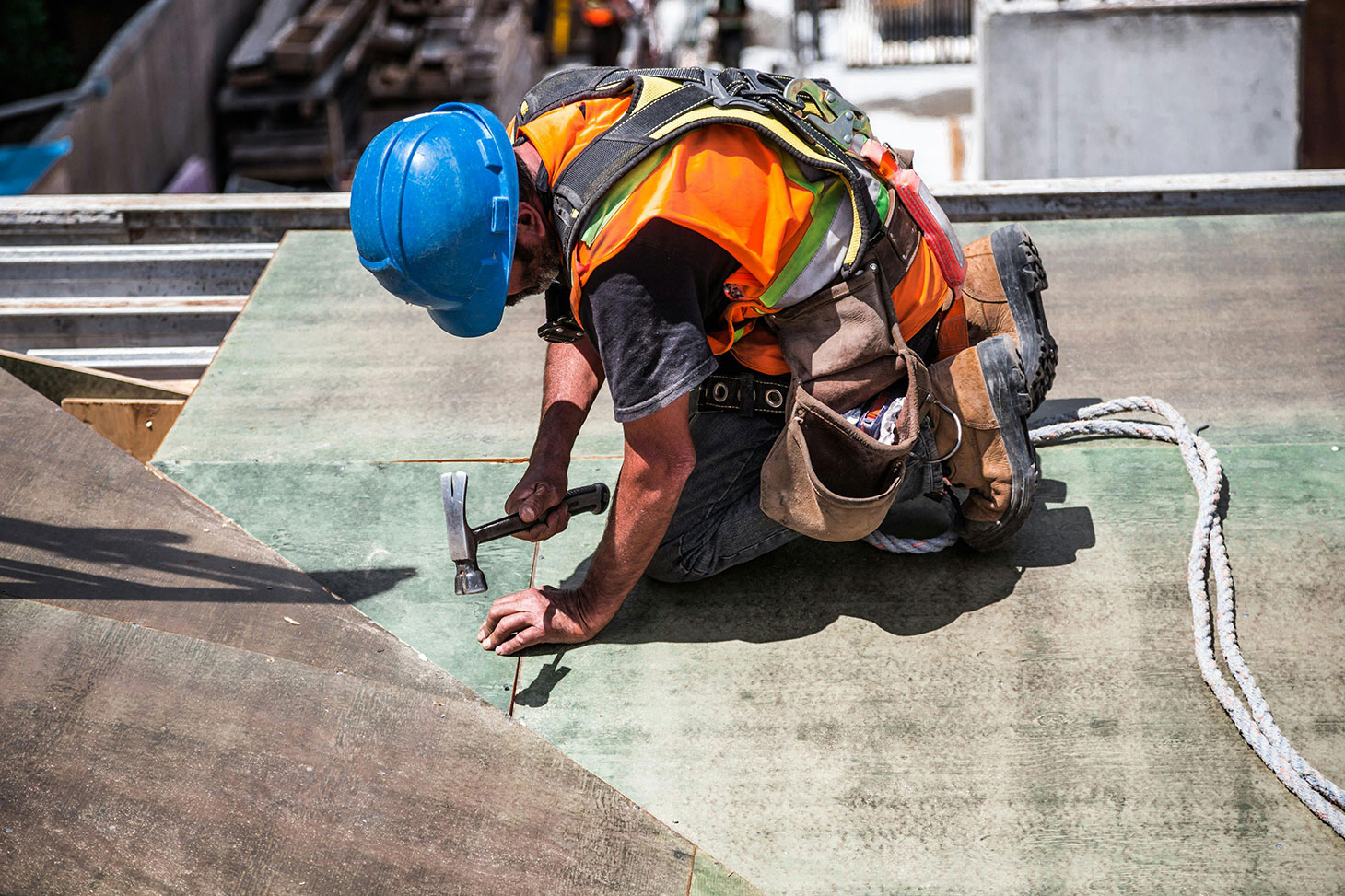
How Long Does A Roof Replacement Take?
Replacing a roof is a major project that affects everything from daily schedules to property protection. For homeowners and building managers alike, understanding how long the process takes can help avoid unexpected disruptions and better plan around the work. The roof replacement timeline varies depending on several key factors, but having a realistic expectation upfront can reduce stress and confusion.
Here are five essential things to consider when estimating the roof replacement duration.
Table of Contents
Key Takeaways
✔ The roof replacement timeline depends on factors like size, material, weather, and contractor experience.
✔ Most residential roofs take between one and five days to replace.
✔ Complex designs or specialty materials can extend the roof replacement duration.
✔ Permits and inspections may add days or weeks to the schedule if not planned properly.
✔ Working with a professional contractor helps keep the average time to replace a roof on track.
✔ Preparing the property before installation helps crews work more efficiently.
✔ Clear communication with the roofing team reduces delays and avoids timeline surprises.
How Long Does a Roof Replacement Take?
The time it takes to complete a roof replacement depends on several factors, including roof size, material type, weather, structural condition, and the experience level of the contractor. Each of these elements can shorten or extend the overall roof replacement timeline, sometimes by several days.
On average, the roof replacement duration ranges from one day for a small asphalt shingle roof to over a week for large or complex roofs with specialty materials. Most standard residential projects fall within the average time to replace a roof of two to five days.
5 Key Factors That Affect Roof Replacement Timeline

1. Roof Size and Complexity
The overall size and shape of a roof is one of the biggest drivers of the roof replacement timeline. A small, simple roof can often be replaced in a day or two, while larger or more complex roofs may take up to a week. Understanding how these factors impact the roof replacement duration can help set realistic expectations from the start.
How Roof Size and Complexity Affect the Timeline
- Larger Surface Area Takes Longer to Strip and Replace: A roof with more square footage naturally requires more time to tear off the old material and install the new one. Crews may need extra days just to complete each phase of the job, even with a full team on site.
- Steep or Irregular Slopes Slow Down Progress: Roofs with steep pitches or unusual angles require specialized equipment and safety gear, which adds time to each workday. Crews must work more cautiously on these roofs, reducing the speed of both tear-off and installation.
- Multiple Roof Features Increase Labor Time: Dormers, skylights, chimneys, and valleys all demand precise cutting and sealing, which extends the roof replacement timeline. Each feature creates breakpoints in the workflow, requiring careful attention to prevent future leaks.
2. Roofing Material Type
The type of material chosen has a direct effect on the roof replacement duration. Some materials are quicker to install, while others require extra steps, tools, or expertise. Knowing what to expect from each option can help explain variations in the roof replacement timeline.
How Material Type Changes the Installation Process
- Asphalt Shingles Are Fast and Flexible: Asphalt shingles are the most common roofing material and also one of the easiest to work with. Most crews can install them in one to three days, keeping the average time to replace a roof short and manageable.
- Metal Roofs Require Precision and Prep: Metal panels take longer to install because each sheet must be measured, aligned, and fastened carefully. Cutting and fitting around roof edges or penetrations also adds to the overall roof replacement timeline.
- Tile and Slate Demand Skilled Labor: Clay tiles and slate are heavy and fragile, requiring slower, more careful handling. This often doubles the roof replacement duration compared to simpler materials, especially when repairs or reinforcement are needed underneath.
3. Weather and Seasonal Conditions
Weather plays a major role in how quickly a roof replacement can move forward. Even the most experienced crews are at the mercy of rain, wind, or freezing temperatures. Choosing the right season can make or break the project schedule.

How Weather Can Delay or Extend the Process
- Rain Halts Work for Safety and Quality: Roof work stops when rain hits—not just because it’s dangerous, but because moisture can ruin roofing materials. Even a half-day of rain can push back the roof replacement duration by a full day or more.
- Cold Weather Slows Down Adhesives and Sealing: Shingles and sealants often perform best in mild temperatures. In cold weather, adhesives can fail to bond properly, which can lead to longer installation times and a delayed roof replacement timeline.
- Summer Heat Can Limit Daily Work Hours: While dry weather helps, extreme heat can be dangerous for roofing crews. In high temperatures, teams often work shorter shifts, which stretches out the average time to replace a roof by a few extra days.
4. Structural Damage and Repairs
What lies beneath the surface can heavily impact the roof replacement timeline. A roof that appears solid from the outside may have hidden damage that adds time and labor. Uncovering these issues during tear-off often leads to an extended roof replacement duration.
How Unexpected Repairs Affect the Schedule
- Rotten Decking Must Be Replaced First: If the wooden sheathing under the shingles is soft, moldy, or warped, it must be replaced before any new materials go on. This repair step can add a full day or more to the average time to replace a roof, depending on how widespread the damage is.
- Damaged Flashing or Vents Require Rework: Replacing old flashing or rooftop vents takes time and careful sealing to avoid leaks. While not always a major delay, it still adds a layer of complexity to the overall roof replacement duration.
- Water Damage Can Spread Beyond the Roof: Leaks that have gone unnoticed may lead to issues in the insulation or framing below the roofline. In those cases, crews must coordinate with other specialists, adding more days to the roof replacement timeline.
5. Contractor Crew Size and Experience
Not all roofing crews work at the same pace. A large, experienced team can finish a job faster and with fewer errors, while a smaller or less seasoned crew may take significantly longer. Contractor selection often determines the real-world roof replacement duration.
Why Crew Size and Skill Matter More Than Expected
- Larger Crews Can Divide and Conquer: With more hands on deck, tasks like tear-off, prep, and installation can happen at the same time. This efficiency can shorten the roof replacement timeline by several days, especially on mid-sized homes.
- Experienced Contractors Work Smarter: A skilled team knows how to handle tricky roof features and unexpected problems without wasting time. Their expertise reduces delays and keeps the average time to replace a roof on track.
- Poor Planning Can Stall the Entire Job: Even a professional crew can face setbacks if materials aren’t ready or site prep isn’t complete. A disorganized contractor can stretch the roof replacement duration unnecessarily due to miscommunication or lack of planning.
How to Prepare a Property for Roof Replacement
Getting a home or building ready before the crew arrives can make a noticeable difference in how smoothly a roof replacement goes. A few simple steps can help avoid delays, protect belongings, and support a more efficient roof replacement timeline. While professionals handle the heavy lifting, property owners play an important role in keeping the project on track—and that can directly impact how long does a roof replacement take.
1. Clear the Driveway and Surrounding Area
Roofers need space for materials, dumpsters, and safe movement. Clearing the driveway and the areas around the home allows crews to unload quickly and work without obstacles. This small step can reduce setup time and help keep the roof replacement duration on schedule.
2. Cover or Remove Items in the Attic
Dust, debris, and small bits of roofing material often fall into attic spaces during tear-off. Covering furniture, boxes, or stored valuables with plastic sheeting protects them from damage. This keeps cleanup minimal and allows the roof replacement timeline to move forward without extra work after the job.
3. Secure Outdoor Furniture and Decorations
High winds and falling debris during a roof replacement can damage lawn items. Removing patio furniture, hanging plants, or decorations ensures nothing gets broken or interferes with crew access. These precautions support safety and a steady average time to replace a roof.
4. Let Neighbors Know About the Project
Notifying neighbors about the scheduled roof replacement shows courtesy and helps prevent surprises. Crews will be working with loud tools and large equipment, which can impact nearby homes. Giving neighbors a heads-up reduces complaints and distractions, helping professionals stay focused on the roof replacement timeline.
5. Make Arrangements for Kids and Pets
The noise and activity of a roof replacement can be stressful for children and pets. Arranging alternative spaces or quiet rooms during working hours helps avoid accidents or distractions. A calm environment supports both safety and the planned roof replacement duration.
6. Walk the Property with the Contractor Before Work Begins
Taking time to walk the exterior with the contractor helps clarify expectations and spot any pre-existing issues. This walkthrough allows the roofing team to plan around fragile landscaping, access points, or specific concerns. That preparation helps prevent surprises that could extend the average time to replace a roof.

How to Choose a Roofing Contractor Based on Timeline Needs
As of 2025 data, roof replacement costs $9,517 on average, so hiring the right contractor is crucial to staying on budget and schedule. A skilled, organized crew can complete the work efficiently, while a less experienced team may cause delays that extend the timeline—and ultimately affect how long does a roof replacement take.
1. Ask for a Detailed Project Schedule
A trustworthy contractor should provide a clear breakdown of each project phase, from tear-off to cleanup. This schedule gives a realistic view of the roof replacement duration and helps identify any built-in buffer days for weather or repairs. If the contractor avoids giving a specific timeline, that’s a red flag.
2. Confirm Crew Size and Daily Work Hours
More workers generally mean faster completion, especially on larger or more complex roofs. Ask how many team members will be on-site each day and how many hours they typically work. A full-time, dedicated crew helps keep the roof replacement timeline as short as possible.
3. Check Experience With Similar Roof Types
Different roofing materials and designs require different skill sets. A contractor who specializes in asphalt may not be the best choice for slate or tile installations, which take longer. Choosing a pro with relevant experience can improve the average time to replace a roof by avoiding missteps or do-overs.
4. Read Reviews That Mention Timeliness
Online reviews often highlight whether a contractor met their promised schedule or not. Look for comments about how closely the team stuck to the estimated roof replacement timeline and how they handled delays. Timeliness in past projects is a strong indicator of what to expect.
5. Review Warranty and Post-Project Support
A contractor who rushes the job to meet an unrealistic deadline might skip important steps. Confirm that the work is backed by a labor warranty and that someone will follow up for inspection or adjustments if needed. Quality professionals never compromise workmanship to shorten the roof replacement duration.
6. Discuss Contingency Plans for Delays
Even with the best planning, unexpected issues can come up. Ask how the contractor handles weather interruptions, material shortages, or structural repairs that may affect the roof replacement timeline. A clear backup plan shows professionalism and helps protect the average time to replace a roof from ballooning unexpectedly.
How Roofing Permits and Inspections Affect the Schedule
Permits and inspections are often overlooked when estimating a roof replacement timeline, yet they can significantly impact how long the process takes. These legal steps ensure compliance with safety and building codes but often involve waiting periods and potential rescheduling.
As the global roofing materials market is projected to grow at an annual rate of 3.9% from 2024 to 2030, understanding how these regulatory requirements influence project timelines becomes even more important.
1. Permit Approval Can Take Several Days or Weeks
Most towns or cities require a permit before any major roofing work begins. Depending on the local building department’s workload, approval can take anywhere from a day to a few weeks. This waiting period often adds time to the overall roof replacement timeline, especially during busy construction seasons.
2. Missing Permits Can Lead to Fines or Work Stoppage
Skipping permits to save time is risky and usually backfires. If a job starts without the proper paperwork, inspectors can shut it down mid-project, extending the roof replacement duration and increasing costs. Reputable contractors always pull permits in advance to keep things legal and on schedule.
3. Scheduled Inspections Can Delay Next Steps
Inspections often happen at key phases of the roof replacement—such as after tear-off or before shingle installation. If inspectors aren’t available immediately, crews must pause and wait, stretching out the average time to replace a roof. Working with a contractor who knows local processes helps streamline inspection timing.
4. Failing an Inspection Requires Rework
If an inspection uncovers improper materials, missed code requirements, or poor installation, the job can’t continue until the issue is fixed and re-inspected. This not only adds labor and material costs but also pushes back the roof replacement timeline by days or even weeks. Contractors with proven track records are less likely to fail inspections.
5. Permit Requirements Vary by Roof Type and Location
Some areas require additional permits for complex materials like tile or for homes in historical districts. These special rules may involve extra documentation or multiple inspection rounds. Knowing these requirements early helps prevent surprise delays in the roof replacement duration.
6. Professional Contractors Handle Permits and Scheduling for You
Experienced roofing professionals take care of submitting permit applications and coordinating inspection appointments. This reduces stress for property owners and avoids costly timing errors. Choosing a contractor familiar with the process keeps the average time to replace a roof closer to the original estimate.
Frequently Asked Questions (FAQs)
Yes, a roof replacement can be done in winter, but it depends on the temperature and weather conditions. Cold weather can affect how well materials like asphalt shingles seal, which may extend the roof replacement duration. For this reason, the average time to replace a roof in winter is often longer than in warmer months.
Most people stay in their homes during a roof replacement, although it can be noisy and disruptive. Leaving for the day may help avoid the hassle, but it’s not required. The roof replacement timeline is not affected by whether the property is occupied, as long as crews have full access.
Installing new shingles over old ones can save time, but it may hide existing damage. While it might reduce the roof replacement duration slightly, it can shorten the roof’s lifespan and increase long-term costs. Most professionals recommend full tear-off to keep the roof replacement timeline both efficient and high-quality.
Yes, solar panels must be removed before the roof work begins and reinstalled afterward, which adds extra steps. This can increase both labor needs and the total roof replacement duration. The average time to replace a roof with solar panels may be extended by several days due to coordination and safety.
Roof replacement is a loud process, especially during tear-off and nailing. The noise typically lasts for most of each workday and continues throughout the roof replacement timeline. On average, expect noise for two to five days, depending on the roof replacement duration for the project.

Book Reliable Roof Replacement with Roofing Experts of Hyde Park
For dependable, on-time service in Hyde Park, NY, Roofing Experts of Hyde Park delivers quality craftsmanship backed by honest timelines and skilled professionals. Whether tackling a full tear-off or replacing worn-out shingles, our team works efficiently without cutting corners—keeping the roof replacement timeline clear and delays minimal. With a reputation for getting the job done right the first time, Roofing Experts of Hyde Park brings peace of mind to every project.
Reach out today to schedule an estimate!
